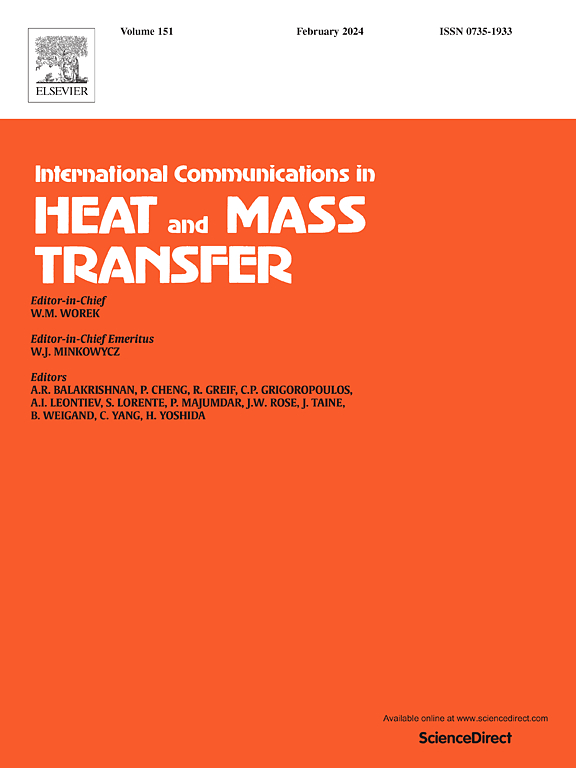A coupled heat-moisture transfer model for the design of cooling textiles
IF 6.4
2区 工程技术
Q1 MECHANICS
International Communications in Heat and Mass Transfer
Pub Date : 2025-04-01
DOI:10.1016/j.icheatmasstransfer.2025.108935
引用次数: 0
Abstract
Given the frequent occurrence of extreme heat in recent years, it is crucial to prevent hyperthermia and ensure the safety of individuals at outdoors. However, comprehensive and effective evaluation methods for clothed human body remain insufficient, particularly regarding the critical need to understand the heat and moisture transfer of cooling textiles. This study aims to enhance cooling performance by investigating the effects of different textile thermal properties, such as solar reflectivity, thermal emissivity, and thermal conductivity. First, a coupled heat-moisture transfer model between the human body, textile, and the environment is established, enabling an accurate assessment of heat loss under high-temperature conditions. Furthermore, heat losses for individuals under stationary, walking, and running conditions are evaluated. The results show that the model successfully replicates experimental findings. Under high temperature conditions, solar reflectivity of textiles plays a significant role in regulating heat transfer, while the thermal emissivity and thermal conductivity have less impact on thermal performance. This study provides a theoretical foundation and practical guidance for the development of cooling textiles, which would be beneficial for assessing human thermal management in high-temperature environments.
求助全文
约1分钟内获得全文
求助全文
来源期刊
CiteScore
11.00
自引率
10.00%
发文量
648
审稿时长
32 days
期刊介绍:
International Communications in Heat and Mass Transfer serves as a world forum for the rapid dissemination of new ideas, new measurement techniques, preliminary findings of ongoing investigations, discussions, and criticisms in the field of heat and mass transfer. Two types of manuscript will be considered for publication: communications (short reports of new work or discussions of work which has already been published) and summaries (abstracts of reports, theses or manuscripts which are too long for publication in full). Together with its companion publication, International Journal of Heat and Mass Transfer, with which it shares the same Board of Editors, this journal is read by research workers and engineers throughout the world.

 求助内容:
求助内容: 应助结果提醒方式:
应助结果提醒方式:


